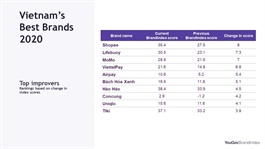Seeking strong returns in a low interest rate environment
Seeking strong returns in a low interest rate environment
Interest rates have reached their lowest levels in five years. The US Federal Reserve, responding to what is likely to be the deepest economic downturn since the Great Depression, dialled back its benchmark rates to the 0-0.25 per cent range in March, down from the 1.50-1.75 per cent range at the start of the year. The move was one of many aggressive fiscal and monetary measures designed to inject the lifeblood of liquidity to help nurse the US economy back to recovery.

By Dharmo Soejanto - Head of Investment,Partnerships, and Solutions UOB Asset Management
|
So far, the road to recovery has been mixed due to the unpredictable and disruptive impact of the coronavirus worldwide, the uncertainty from the US presidential election, and the intermittent outbursts in US-China tensions.
And it seems that no-one is expecting an increase in interest rates soon, especially after Fed chairman Jerome Powell signalled that the US central bank will tolerate inflation for a longer period of time, one of the traditional triggers for rate increases. If history is any guide, in the aftermath of the financial crisis of 2008, the Fed cut interest rates to zero too and kept them there for seven years.
When interest rates are low, borrowers have the upper hand. Whether they are individuals or corporations, they pay less on what they owe. That said, prospective borrowers looking to take advantage of lower rates by applying for new loans may have to contend with credit tightening, as financial institutions adopt a more cautious stance in response to the uncertain economic outlook.
Savers, by comparison, are in a quandary as low rates translate into lower interest earnings and may even result in their savings shrinking in the face of inflation. To make up for the shortfall, they either have to be more frugal in their spending habits or to look for accounts that offer better rates, even if only marginally.
For investors, the story is more nuanced. Near-zero interest rates tend to boost the market’s valuation of stocks for two reasons. Companies that are credit-worthy can borrow cheaply. Central banks hope this will help spur investments and generate growth, which is their motivation for reducing interest rates.
The interest rate is also the rate at which the future earnings of a company are discounted when calculating their present day value. That is the second reason stock prices rise when rates are lowered – future earnings, discounted at a lower rate, experience a boost in value in current dollar terms. Meanwhile, returns on fixed income instruments such as from bond yields will suffer due to low interest rates. The risk on fixed income investment also rises, as the ultra-low yield does not provide sufficient buffer against future rate increases or inflation. In such a low rate environment, investors may have to be more proactive in adjusting their portfolio mix so it has a higher stock-to-bond ratio.
Just how large a shift in allocation is appropriate will depend on multiple factors, not least of which is the investor’s time horizon. Investors who are close to retirement would be holding a portfolio that is mainly made up of short duration bonds anyway – no matter what the level of interest rates is. In such cases, the room for manoeuvre is rather limited.
Beyond bonds and stocks, there is another investment option – gold, which is accessible to large and small investors alike. Gold tends to perform well in a low interest rate environment, when the opportunity cost of holding it is low. Moreover, compared with receiving negative yield on some European and Japanese government bonds, not actually losing money when one holds gold becomes an attractive proposition.
Gold is often seen as a hedge against inflation, which some investors are worried about given the massive government liquidity injection happening globally. These factors explain why the precious metal has been on a tear, up by more than 20 per cent since the start of the year.
Working out the best strategy in a low interest rate period is a complex task, as markets do not follow straight-line trajectories. They can be unpredictable and at times experience bouts of high volatility, as attested to by the double-digit swings in the share prices of Apple and Tesla in recent weeks. We would therefore advise investors against trying to time the market.
Besides recommending the usual geographical and sectoral diversification, advisers may suggest new areas of investments such as funds or companies that display positive environmental, social, and governance attributes may be an attractive alternative.
Whatever the future may hold, a prudent stance amid the current uncertainty requires investors to be disciplined, to stay invested and to practice diversification, by spreading one’s portfolio over a wider range of investments.
Inaction in the face of low interest rates implies accepting next to zero returns, while overzealous yield and return chasing brings its own set of dangers, including exposing oneself to unintended, higher risks.




























